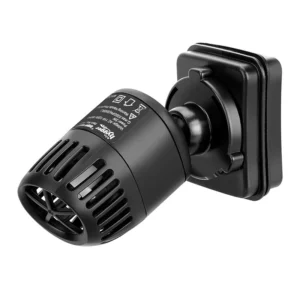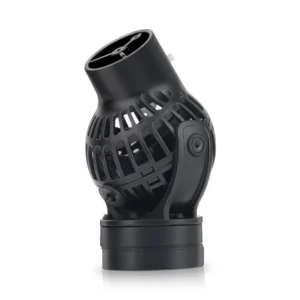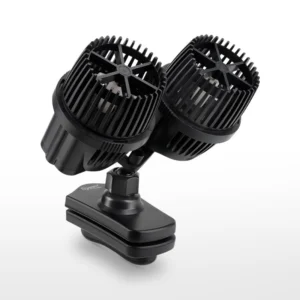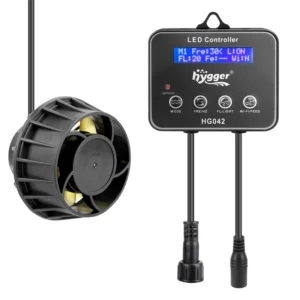Wavemaker in an aquarium is a great tool with a plethora of benefits. And that is what the following article will mention. We hope today’s article will give you more ideas about wave makers, like how to choose the ideal size wavemaker for your tank and where to place wave makers in the aquarium, etc. OK, rant over, let’s get started.
Content Table
The purpose of a wavemaker in the aquarium
By rotating the aquarium water and circulating the water flow, a wave maker helps to blow away the fish feces or waste to the pump suction inlet. And then they would be sucked away from the aquarium. Consequently, adding a wavemaker is beneficial to keep an aquarium clean and maintain great water quality. Besides that, there would be less injury in your tank. As the fish are distracted by the water flow, hence show less aggression. Accordingly, they fight less. Furthermore, a wave maker can create strong water flow, which mimics fish’s natural environment. Then fish are forced to move around the tank, which is helpful to strengthen the fish’s bodies.
A wave maker does make sense in an aquarium. Nonetheless, whether should you add one is determined by the aquatic pets in your tank. In general, tanks with fish native to fast-moving waters need a wave maker to create strong water currents. While it is not necessary to add one for fish coming from slow-moving waters.

Wavemaker size for a 400-litre tank
When it comes to wavemaker size, have you ever been confused about what size wavemaker you need? Especially when you have a big tank of 400 liters. Generally, you should consider the tank size, water flow rate, and aquarium substrate. In general, compared with small aquariums, large aquariums need a wave maker with a higher water flow rate. Also, the aquarium water should be cycled 10 times at least. Furthermore, substrate, like fine sand, will be blown around your tank easily. In this case, you should be cautious about the power, flow rate, and outlet angle of the wave maker.
Next, we will list some suitable wave maker sizes for diverse tank sizes.
| Tank size | Recommended wavemaker size |
| 50 gallons | 6W mini wave maker |
| 180 gallons | 18W inverter wavemaker pump |
| 200 gallons | 12W double-head wave maker |
| 400 liter (105 gallons) | 6W aquarium wavemaker pump |
Where to place wavemakers in aquariums
After choosing the right pump, where to place the wavemaker to maximize its effectiveness? The most important point is that you should place it in the aquarium which creates optimal water circulation. Also, the inlet or outlet of a wavemaker should not directly point to the fish. Otherwise, it would cause stress to the inhabitants. Generally, placing a wavemaker on the bottom of the tank will help to clean residues or other unnecessary substances. Also, if you want to create waves for fish surfing, just place them in the middle of the tank. Because the water movement will force fish to move.
Furthermore, a wavemaker on the upper of the tank will make waves on the water, which avoids stagnant water in the aquarium and aerate the tank.
For a smooth wave process, the wavemaker should be placed in an area where there are no obstructions, such as rocks, piers, or other structures that can disrupt the waves, so it can generate the maximum amount of waves with the highest quality.

As for a planted tank, it is best to avoid strong water currents. Otherwise, it may influence plant growth. Because aquatic plants prefer a gentle water flow. Adequate water movement enables plants to absorb carbon dioxide and nutrients through leaves and stems. In this case, you can just add a powerhead. It can increase water movement and clean up debris and dead spots. Therefore, in planted aquariums or tanks with aquatic plants, you should keep the wave maker far away from the bottom and top of the tank. The former may blow away the substrate, and the latter would cause turbulence. Hence, pacing in the middle of the tank is an excellent alternative.
Wavemakers for beginner
So in this part, let’s learn wave makers for beginners, huh? A smart wave maker is a great option, which is perfect for 5–55 gallons of aquariums. With a built-in controller, the smart aquarium wavemaker mimics ocean waves by setting various flow modes, power, and frequency according to sunrise and sunset, as well as day and night. And you can set the strength of the wave, flow mode, levels of frequency, and ten minutes auto-off mode for feeding.
The 360 degrees motor fan moves the water up and down, while the coral reef sways back and forth naturally with soft waves, it’s a huge benefit for Torch coral(Euphyllia glabrescens). Also, the strong magnetic suction cup makes the wave maker install and detach easily. And the energy-efficient magnetic propellers and motors can circulate water quietly. Consequently, it is feasible to add the smart wave maker to reef tanks and saltwater aquariums, which keep the creatures that are native to the ocean areas.
On the other side, the ultra-quiet aquarium wave maker is another excellent choice, which is ideal for 20-130 gallon aquariums. Featuring 360 degrees motor fan and a strong magnetic base, it is easy to adjust and use. The wave maker can control the water flow direction and make equalized water temperature. Also, two strong magnetic brackets make the absorption more stable, which avoids falling off. And the stable magnetic base reduces noise. Accordingly, the wave maker circulates water quietly.
Additionally, the wave maker mimics natural currents, like rivers and oceans. It helps to blow away fish feces and uneaten food in an aquarium, while it also creates water movements and improves water circulation to increase the oxygen level in the tank. Thus, it is safe to use in freshwater, saltwater, and coral aquariums.
Related topics
That’s it. For more additional information about wave makers, please feel free to share with us in the comment. We’re happy to receive your sharing. Finally, thanks for your reading.




Leave a comment